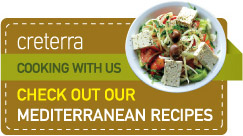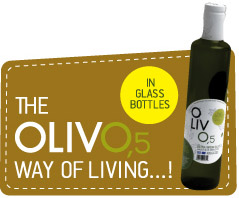
Lynn Livanos Athan
When teaching others to make this dish, I have often joked that the word pastitsio (pa-STEE-tsee-oh) translates to "messy kitchen" in Greek. I was only kidding, but there is a hint of truth to that statement. The Greek word pastitsio derives from the Italian pasticcio, which loosely translates to a mess or a hodgepodge. Three essential components make up this dish - pasta, meat filling, and a creamy bechamel sauce which are layered in a pan and baked to a golden brown. Each stage will require dirtying some pots and pans, but I think you will agree that the end result is well worth the clean up!
Ingredients
1/2 cup OLIVO,5 Extra Virgin Olive Oil
2 lbs. ground beef (or ground lamb, or a mixture of both)
1 large yellow onion, chopped
1 cup dry white wine
1 14 oz. can tomato puree or sauce
3 tbsp. chopped fresh parsley
1/2 tsp. ground allspice
1 tsp. ground cinnamon
1 1/2 cups grated Parmesan cheese (or Kefalotyri if available)
salt and freshly ground black pepper to taste
3 tbsp. breadcrumbs
1 pkg. #2 Macaroni for Pastitsio (500g)- available at Greek or ethnic groceries. You can substitute ziti or penne
4 egg whites (reserve the yolks for bechamel sauce)
1/2 cup unsalted butter (1 stick)
For the bechamel sauce:
1 cup unsalted butter (2 sticks)
1 cup all purpose flour
1 quart milk, warmed
8 egg yolks, beaten lightly
a pinch of ground nutmeg
Note:
Cut pasta like ziti or penne can flatten more than the long Pastitsio noodles, which tend to get twisted when layered. I suggest cooking 2 lbs. of cut pasta to ensure that you have adequate coverage of the pan. If you prefer, you can scale that back to 1 lb.
Procedure
This recipe will yield about 24 servings depending upon the size of your pieces. I use a lasagna pan that is roughly 12 x 18 x 3 inches deep.
Begin with the Meat Filling:
Heat olive oil in a
large sauté pan. Add ground beef and cook over medium-high heat until
pink color disappears, about 5 minutes. Add onions and cook until they
are translucent, about 5 minutes more.
Add wine, tomato sauce,
parsley, allspice, cinnamon, salt, and pepper and allow sauce to simmer
over low heat for 10 minutes. While sauce is simmering put water on to
boil for pasta.
Cook pasta noodles according to package directions
and drain well. Rinse noodles in colander under cold water to cool them
slightly.
Stir in 3 tbsp. breadcrumbs to meat sauce to absorb excess liquid and remove from heat.
Melt
1/2 cup butter in pasta pot and return cooked noodles to the pot. Stir
in beaten egg whites and 1 cup of grated cheese and toss lightly, being
careful not to break the noodles.
Brush the bottom and sides of the
lasagna pan with olive oil. Layer the bottom with half the pasta noodles
and press down so that they are somewhat flat.
Add the meat filling in an even layer to the pasta. Top with remaining pasta noodles and flatten top layer as best you can.
Pre-heat the oven to 350 degrees while you prepare the bechamel sauce.
Béchamel Sauce:
Melt
butter in a saucepan over low heat. Using a whisk, add flour to melted
butter whisking continuously to make a smooth paste or roux. Allow the
flour/butter mixture to cook for a minute but do not allow it to brown.
Add warmed milk to mixture in a steady stream, whisking continuously. Simmer over low heat until it thickens but does not boil.
Remove
from heat and stir in beaten egg yolks. Add pinch of nutmeg. If sauce
still needs to thicken, return to heat and cook over very low heat while
continuing to stir.
Béchamel is thicker than gravy but not quite as
thick as pudding. It should be somewhere in between. One way to tell if
it is thick enough is to dip your wooden spoon in the sauce and draw
your finger across the back of the spoon. If the sauce holds a visible
line then it is thick enough.
Pour the béchamel over the pasta
noodles making sure to pour sauce down in to the corners as well.
Sprinkle with remaining 1/2 cup of grated Parmesan cheese. Bake in 350
degree oven for approximately 45 minutes or until the top is a nice
golden color.






















